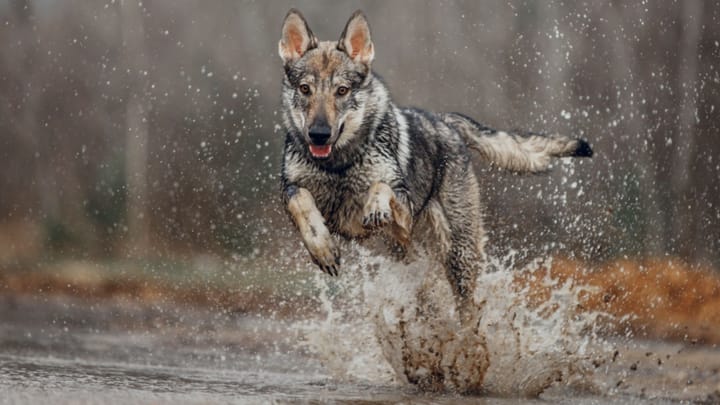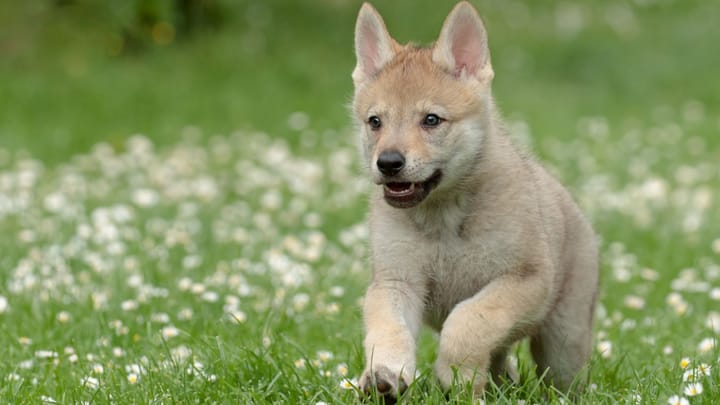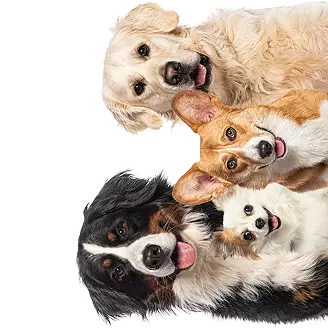Czechoslovakian Wolfdog
Other names : Czechoslovakian Vlciak, Ceskoslovenský Vlciak


The Czechoslovakian Wolfdog is a hybrid breed that combines the natural traits of a native wolf with the tamer sides of a German Shepherd. It is a successful cross, albeit not yet fully calibrated- it requires further efforts in order to arrive at fully balanced specimens. This is an enduring, active dog, very attached to his family, but is used to communicate in a very different way to most other breeds- this is why he is not to be placed in all hands. It is important to know the breed’s characteristics inside out before deciding to adopt such an atypical dog as this one. His lupine aspect should not be the only criterion by which prospective owners choose him.
|
Life expectancy |
The Czechoslovakian Wolfdog has a life expectancy of between 13 and 15 years |
|
Temperament |
|
|
Size |
Medium
|
|
Adult size |
Female
Between 24 and 26 in
Male
Between 26 and 28 in
|
|
Adult weight |
Female
Between 44 and 55 lb
Male
Between 57 and 66 lb
|
|
Coat colour
The coat can range from a grey-yellow to silver grey. The mask is always light and other, lighter shades are present at the base of the neck and over the chest. |
Blue |
|
Type of coat
The coat is medium-long. The topcoat is straight and lies flat. The coat adapts depending on the season: in the winter, the undercoat is abundant and becomes dominant to form a thick, cold-resistant layer. |
Short Long |
|
Eye colour
The eyes are amber-coloured. |
Brown
|
|
Purchase price |
The Czechoslovakian Wolfdog costs approximately 1500£ |
Having been created only quite recently, the breed’s personality traits are still far from being stabilised. The personalities tend to differ widely, depending on the breeder. In addition to this, many specimens are still too wary, aggressive and/or unpredictable. In fact, when it comes to breeders, future selection must be much more rigorous, and when it comes to prospective owners, a diligent rearing is key.
More details about the Czechoslovakian Wolfdog
Czechoslovakian Wolfdog: Origins and history
In 1955, Karel Hartl, considered to be the breed’s ‘father’, crossed the German Shepherd and Carpathian she-wolf as an experiment. After several attempts, he managed to create a fixed, hybrid breed, which then started being recreated from 1965 onwards. In 1982, after several trials and tribulations, the wolfdog was official recognised as a national breed by Czechoslovakian breeders associations. Along with the Saarloos wolfdog, it is the only other wolfdog breed officially recognised by the FCI. The latter recognised the breed officially in 1999.
Physical characteristics of the Czechoslovakian Wolfdog
The Czechoslovakian Wolfdog is a sturdy, medium-sized dog, with a rectangularly-shaped frame. His constitution, movements, appearance, coat, colour and mask resemble that of a wolf. The head, symmetrical and toned, is shaped like a blunt wedge. The eyes are small and almond-shaped, with adherent eyelids. The ears are upright, thin, triangular and short. The tail is set high but carried low. When the dog is excited, it usually curls into a saber shape.
FCI classification of the Czechoslovakian Wolfdog
-
Group 1 - Sheepdogs and Cattledogs (except Swiss Cattledogs)
-
Section 1 : Sheepdogs
Czechoslovakian Wolfdog: Characteristics
Czechoslovakian Wolfdog: Behaviour
Training a Czechoslovakian Wolfdog
This dog’s particularly independent nature makes him a rather difficult pooch to train, in the sense that if he does not perceive the potential gains to the training sessions, he gets demotivated very quickly.
In fact, it is this kind of resistance that constitutes one of the owners’ main problems with this dog, as the Czechoslovakian Wolfdog tends not to want to repeat the same exercises over and over again.
You have to find the right source of motivation for this dog in order to be able to rear him in a smart and coherent way. As soon as a trusting relationship and partnership have been established between the master and his dog, the results can be remarkable.
Having said this, you should not expect an inborn propensity to obedience since, ultimately, the Czechoslovakian Wolfdog will always follow the goals he has set exclusively himself.
Czechoslovakian Wolfdog: Lifestyle
Breed compatibility Czechoslovakian Wolfdog
Czechoslovakian Wolfdog: Purchase price
The price of a Czechoslovakian Wolfdog varies depending on its origins, age, and sex. You have to count an average of £1500.
With regards to the monthly budget required to meet this dog’s physiological needs, you have to estimate an average of £50 per month.
Czechoslovakian Wolfdog: Shedding
Average
Hair loss during moulting seasons may be significant, and will require daily brushes to eliminate all residual dead hairs. But aside from these seasons, hair loss remains moderate.
Czechoslovakian Wolfdog: Grooming
Despite being very abundant, the maintenance of this dog’s coat is rather simple. Since he is not a big fan of grooming, and because he doesn’t particularly need it, this primitive dog will simply need to be brushed on a regular basis.
His eyes will also need to be checked regularly in order to avoid all risk of infection.
Czechoslovakian Wolfdog: Health
Life expectancy is 14 years on average.
The Czechoslovakian Wolfdog is a primitive dog, equipped with additional robustness due to his hybrid nature.
His lupine aspect allows him to adapt to various climates easily, even the hottest ones. Fresh water and a spot in the shade will nonetheless have to be made at his disposal throughout the summer.
Thanks to his coat, which transforms and thickens as winter approaches, this dog tolerates the cold and any related challenging weather very well.
A balanced diet, coupled with enough physical exercise will be enough to prevent any excessive weight gain on this dog’s part.
- Hip dysplasia
- Eye problems
- Degenerative myelopathy (paralysis of the hindquarters)
Do you want a Czechoslovakian Wolfdog dog ?
Oh no...
There are no Czechoslovakian Wolfdog adoption profiles at the moment...







